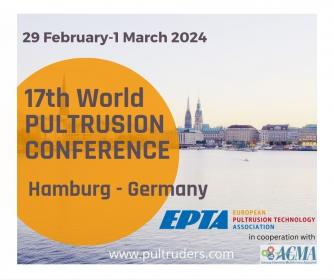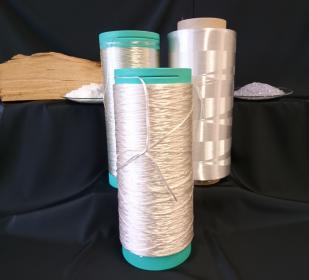STFI: Leichtbauneuheiten auf JEC World in Paris
Auf der diesjährigen JEC World zeigt das STFI Highlights aus dem Carbonfaserrecycling sowie einen neuen Ansatz von hanfbasierten Bastfasern, die als Bewehrung im Leichtbau vielversprechende Eigenschaften mitbringen.
Grünes Snowboard
Auf der JEC World in Paris vom 5. bis 7. März 2024 zeigt das STFI ein Snowboard der Firma silbaerg GmbH mit patentiertem anisotropen Kopplungseffekt aus Hanf und recycelten Carbonfasern mit biobasiertem Epoxidharz. An der Entwicklung des Boards waren neben silbaerg und STFI auch die Partner Circular Saxony - das Innovationscluster für die Kreislaufwirtschaft sowie FUSE Composite und die bto-epoxy GmbH beteiligt. Das grüne Snowboard wurde mit JEC Innovation Award 2024 in der Kategorie „Sport, Freizeit und Erholung“ ausgezeichnet.
VliesComp
Rezyklate in verschiedenen Leichtbaulösungen wieder in den Markt zu bringen, ist das Ziel der im Projekt VliesComp vereinigten Industriepartner Tenowo GmbH (Hof), Siemens AG (Erlangen), Invent GmbH (Braunschweig) und STFI. Beispielhaft wurden dabei unter anderem die Anwendungsfelder „Innovative E-Maschinenkonzepte für die Energiewende“ und „Innovative E-Maschinenkonzepte für die E-Mobilität“ betrachtet. Gezeigt wird auf der JEC World in Paris ein Leichtbaulagerschild für E-Motoren, das auf Basis von Hybridvliesstoffen – einer Mischung aus thermoplastischer Faserkomponenten und recycelter Verstärkungsfasern – sowie auch Vliesstoffen mit 100 % recycelten Verstärkungsfasern hergestellt wurde. Das Lagerschild wurde schlussendlich mit einem Rezyklatanteil von 100 % gefertigt. Die Untersuchungen ergaben, dass im Vergleich zur Variante aus Primärkohlenstofffasern im RTM-Verfahren eine Reduzierung des CO2-Äquivalents um 14 % bei gleicher Leistung möglich ist. Die Berechnung zur Verwendung des Prepreg-Verfahrens unter Nutzung eines Bioharzsystems zeigt ein Potenzial zur Reduzierung des CO2-Äquivalents um fast 70 %.
Bastfaserbewehrung
Zur Stabilitätserhöhung im Pflanzenstängel bilden sich im Rindenbereich Bastfasern aus, die den Stengel stützen, aber im Gegensatz zum starren Holz sehr flexibel aufgebaut sind und es ermöglichen, dass schlanke, hohe Pflanzen sich im Wind bewegen können, ohne zu brechen. Ein neues Verfahren gewinnt die Bastrinde des Hanfes durch Schälen. Die daraus erzielten Kennwerte, wie Zug-E-Modul, Bruchkraft und Dehnung, sind vielversprechend im Vergleich mit den am Markt verfügbaren Endlosrovingen aus Flachs. Das Material könnte als Bewehrung im Leichtbau seine Anwendung finden. Das STFI stellt zur JEC World Bewehrungsstäbe aus, die im Pultrusionsverfahren auf Basis biobasierter Bewehrungsfasern aus Hanfbast für mineralische Matrices, zu einem Gewirke verarbeitet wurden.
STFI Sächsische Textilforschungsinstitut e.V. Leichtbau JEC World Carbonfaser Hanfbast
Sächsische Textilforschungsinstitut e.V. (STFI)










